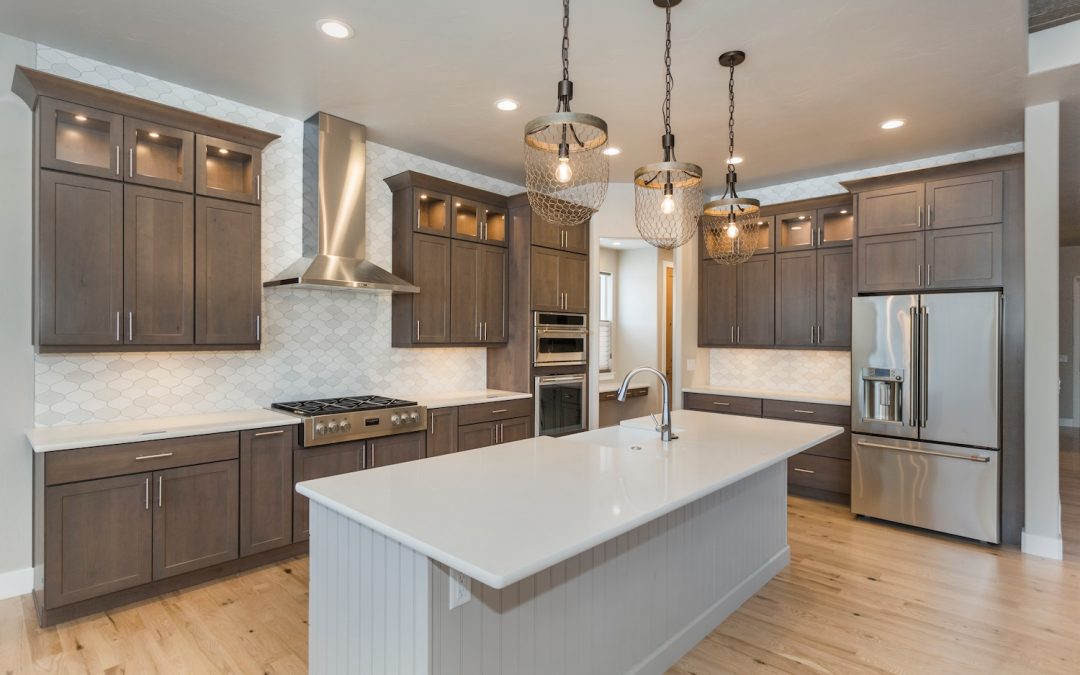Stone countertops have long been a symbol of luxury and timeless elegance in home design. Whether you’re envisioning a sleek kitchen island or a stunning bathroom vanity, understanding how these beautiful surfaces come about – from its conception to its cutting and fabrication – can add to your appreciation of their craftsmanship, which in turn, will help you choose the best material for your next kitchen or bathroom remodel.
Quartz Countertops: The Perfect Blend of Beauty and Durability
Quartz countertops have revolutionized the world of kitchen and bathroom design, and are becoming the kitchen remodeler’s countertop of choice for obvious reasons: these engineered stone surfaces offer a harmonious blend of aesthetics, functionality, and durability.
The material can mimic the colour and design of granite, but is far easier to maintain. You can read our in-depth comparison between the two countertops materials here. Quartz is a non-porous material that never needs sealing. Best of all, the colour and design of quartz counters are not restricted to hues found in nature, but rather are limited only by your imagination.
Let’s take a closer look at quartz countertops, examining their composition, production process, and the reasons behind their popularity among homeowners.
What Is Quartz?
Quartz, a mineral naturally occurring in abundance within the Earth’s crust, is composed of silicon and oxygen atoms that crystallize into stunning formations. However, when it comes to quartz countertops, they are not crafted from pure quartz alone. Instead, these countertops typically consist of approximately 90-95% quartz particles. The remaining 5-10% includes a combination of resins, polymers, and various pigments. This unique blend results in the diverse array of colors and patterns that characterize quartz countertops
Its remarkable resistance to both chemical and mechanical erosion renders it suitable for a multitude of uses, including as countertops in the kitchen and bathroom.
Quartz Manufacturing Process
Developed by Marcello Toncelli and his Breton Company in northeast Italy during the early 1970s, the patented and industry-standard Bretonstone process transforms small stone aggregates—such as marble, quartz, silica, and granite—into solid surfaces that closely resemble natural stone. The resulting composite slabs begin with uniform dimensions and varying thicknesses, allowing them to be carved and polished just like their natural counterparts.
The Bretonstone manufacturing process involves adding a polymer mix—comprising a binding syrup and pigments—to primarily quartz. This precise blending occurs within an airless vacuum, ensuring complete compaction. The quartz mixture is then vibrated to achieve a consistent and homogeneous blend. Subsequently, it undergoes pressurization and heating in a process known as “vibrocompression under vacuum.” The outcome is a remarkably non-porous engineered stone slab that can either emulate the elegance of granite or the veining of marble.
This man-made stone mix offers a product that is scratch and chip resistant, non-porous, and offers unlimited colours and design that can be used for industrial and residential floors, kitchen and bathroom countertops, backsplashes and hearths.
Cutting Quartz Countertops
Unlike natural stone, quartz is not prone to cracking or splintering under impact and is relatively easy to cut to the size and shape that’ll be perfect for your home or workspace. However, professional installers understand better how to properly handle and cut quartz countertops slabs without causing damage. They also have access to specialized equipment that allows for precise cutting, shaping, and polishing of the countertop edges. This level of craftsmanship ensures a seamless fit between sections and creates an overall polished look.
When it comes to cutting quartz, several machines are commonly used. Here are the primary ones:
Bridge Saw: A CNC bridge saw is widely used for cutting quartz slabs. It provides precision and versatility for creating kitchen countertops, vanity tops, and claddings. The saw can be equipped with a diamond blade for efficient cutting.
Circular Saw with Diamond Blade: A circular saw fitted with a diamond-tipped blade is another effective tool for cutting quartz. The blade’s diamond coating ensures efficient and precise cutting. Keep the blade wet to prevent overheating and maintain smooth cuts.
Why Choose Quartz Countertops And Where To Find Them In Kelowna?
Quartz countertops combine the elegance of natural stone with the practicality of engineered materials. Whether you’re renovating your kitchen or upgrading your bathroom, quartz is the perfect choice for lasting beauty and functionality.
Quartz countertops also come in a plethora of styles and patterns. Whether you prefer a classic look, a modern vibe, or something in between for your bathroom or kitchen countertops, quartz and natural stone countertops specialist in Kelowna, Landmark Countertops has got a quartz countertop to suit all your needs.
Boasting a combined wealth of over 150 years of collective expertise, the team at Landmark Countertops is known to take pride in maintaining an all-encompassing approach, handling everything in-house, from material selection to cutting and fabrication. Come into the showroom and speak with Landmark Countertops about your project in Kelowna and its surrounding areas. Renovation or new build, Landmark Countertops have the expertise to quote your job quickly – so you can spend more of your precious time choosing the right kitchen remodeling contractor.

